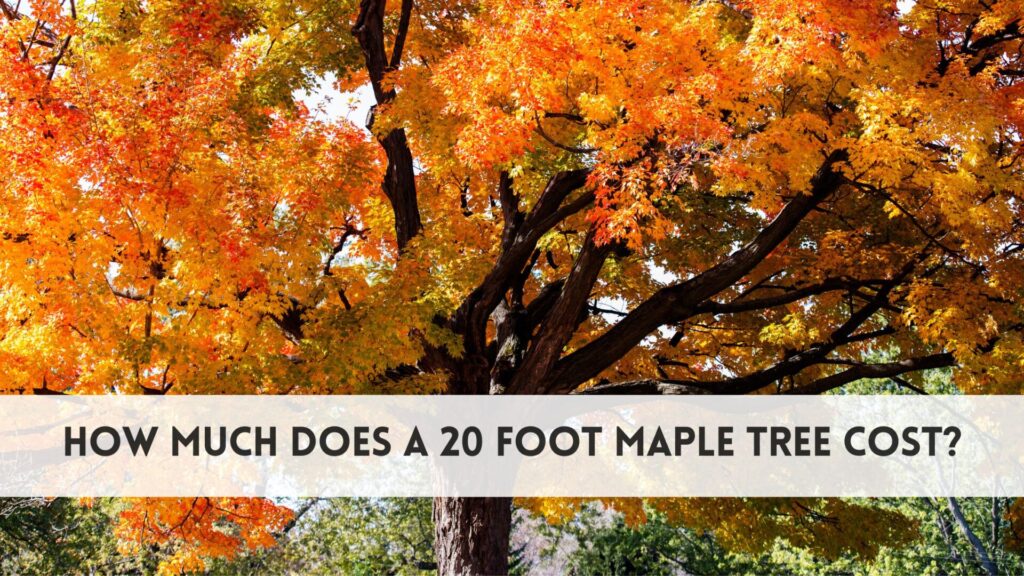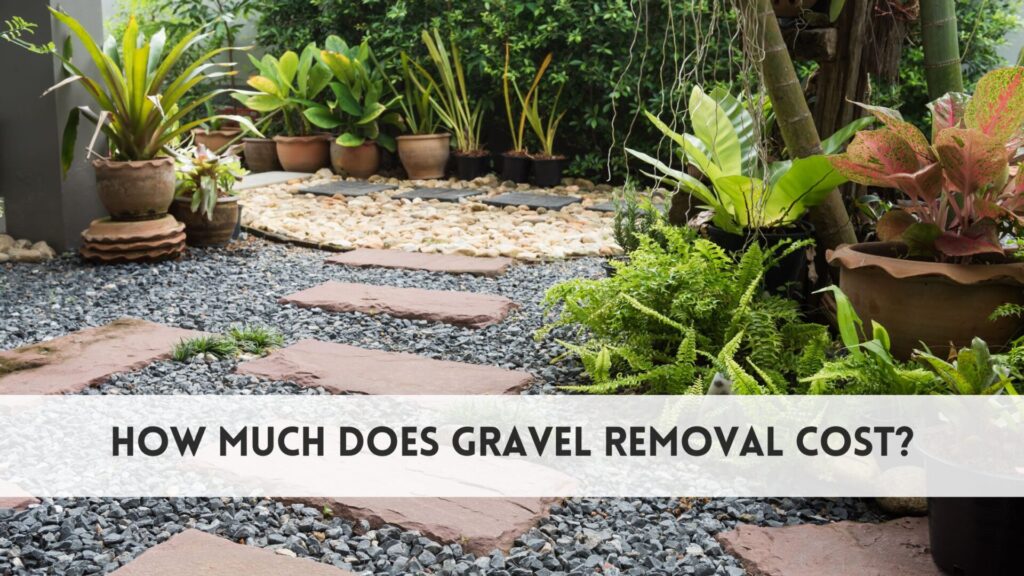Landscaping your property with a large maple tree can transform your outdoor space, providing shade, enhancing the aesthetic appeal, and boosting the overall value of your home. Maple trees are particularly popular for their vibrant fall colors and wide canopies, making them an ideal choice for homeowners looking to create a striking and functional landscape. So, How much does a 20 foot maple tree cost?
However, understanding the cost of such a significant addition is crucial before making a purchase. Several factors influence the price of a large maple tree, including the species, age, and health of the tree, as well as geographic location and the reputation of the seller. Additionally, the cost of delivery, planting, and long-term maintenance should be considered. In this guide, we’ll explore the key factors that affect the price, offer insights into purchasing a maple tree, and provide valuable tips on planting and ensuring its longevity in your landscape.
How much does a 20 foot maple tree cost in Austin?
The price of a 20-foot maple tree can vary based on several factors, including species, health, and location. When purchasing a tree, it’s important to be aware of the typical cost ranges, especially if you’re in Austin, Texas. Here’s an overview
| Maple Species | Average Cost (USD) | Notes |
| Red Maple | $800 – $1,500 | Known for vibrant fall colors and fast growth, commonly found in Austin. |
| Sugar Maple | $1,200 – $2,000 | Popular for its beautiful autumn hues and larger canopy. |
| Norway Maple | $600 – $1,200 | Hardy and quick-growing; less expensive but still provides excellent shade. |
| Silver Maple | $700 – $1,300 | Ideal for large spaces with a quick-growing, broad canopy. |
Red Maple
The Red Maple is a popular tree species known for its vibrant red foliage during the fall season. This tree is fast-growing and adaptable to various soil types, making it a versatile choice for many homeowners. Red Maples thrive in both urban and rural settings, offering excellent shade and aesthetic appeal. As one of the most common types of maple, the Red Maple is often chosen for its hardiness and relatively easy care requirements. Its ability to grow quickly and endure a range of environmental conditions makes it a top contender for large landscaping projects.
Sugar Maple
The Sugar Maple is renowned for its stunning autumn colors, which range from bright yellow to deep red. This species is highly prized for its beauty and its valuable sap, which is used to produce maple syrup. Sugar Maples are slower-growing than other varieties, requiring more time to reach full maturity. They are also known for their sturdy structure and wide canopy, which can provide excellent shade. However, they are best suited for larger spaces where they have room to grow and spread, as their size can become quite expansive over time.
Norway Maple
The Norway Maple is a hardy and fast-growing species that thrives in a variety of climates and soil types. Known for its dense canopy, this tree is often used for street planting and large yards where ample shade is needed. The Norway Maple is highly resistant to pests and diseases, making it a low-maintenance option for homeowners seeking a reliable and durable tree. Despite its rapid growth, it is less valued for its seasonal foliage compared to other maples, but it provides solid shade and structure, making it a popular choice for landscaping.
Silver Maple
The Silver Maple is a large tree with a rapid growth rate, making it an excellent choice for homeowners looking to quickly create shade. Its wide canopy offers significant coverage, ideal for larger yards or properties that need fast shade. The tree’s leaves have a silvery underside, adding a unique visual element to its appearance. However, Silver Maples are known for their shallow root systems, which can cause issues with sidewalks and driveways if planted too close to structures. They also require regular maintenance to keep their branches healthy and prevent breakage during storms.
Why Is Maple So Expensive?
Maple trees, especially larger varieties like the 20-foot maple tree, can be expensive for several reasons. First, their slow growth rate significantly contributes to the high cost. It can take many years for a maple tree to reach its full size, requiring consistent care and cultivation. Larger trees, such as the 20-foot maple, require extended periods of growth, driving up their price due to the time investment involved.
Another reason for the high cost is tree maintenance. Mature maple trees demand ongoing care, including watering, pruning, fertilizing, and pest management. These essential services ensure the tree remains healthy and visually appealing, adding to its overall expense.
Additionally, transportation costs can add significantly to the price. Large trees require special handling during transit to prevent damage. The logistics involved in moving a 20-foot maple tree from the nursery to your property involve specialized equipment and increased labor, which raises the price.
Lastly, many varieties of maple, particularly Sugar Maples, require specialized care. These trees are often more sensitive to environmental changes and diseases, making them more costly to maintain. When selecting a maple tree, it’s essential to factor in the long-term costs of care and transportation to ensure you’re making an informed investment.
Factors Affecting the Cost of a 20-Foot Maple Tree
There are several key factors that determine how much a 20-foot maple tree will cost. Understanding these factors will help you plan your purchase and avoid any unexpected costs.
Species of Maple Tree
- Sugar Maples tend to be more expensive because they grow more slowly and have vibrant fall colors.
- Norway Maples are generally more affordable as they are fast-growing and less maintenance-intensive.
- The rarity of a species in your region also impacts its cost, with rare species often fetching higher prices.
Age of the Tree
- An older 20-foot maple tree has had years of cultivation and nurturing, increasing its price.
- Younger trees may be less expensive but may take longer to reach their desired height.
- Trees that have matured over time are also more stable and less likely to suffer from transplant shock.
Location of Purchase
- Local purchases generally cost less because of lower transportation fees.
- Buying from distant nurseries may add shipping charges, especially for large trees like the 20-foot maple.
- Local suppliers can offer the advantage of healthier, regionally adapted trees, reducing the risk of disease or damage.
Health and Quality
- A healthy tree with strong roots and no disease will cost more but is a better long-term investment.
- Damaged trees or those with poor-quality roots may be cheaper upfront but can lead to additional care costs.
- Investing in a high-quality 20-foot maple tree ensures better growth and fewer long-term maintenance issues.
Delivery and Planting Costs
- Delivery fees can add significant costs depending on the distance from the nursery to your location.
- Planting services are recommended for large trees and may involve additional labor fees.
- Professional planting ensures the tree’s proper placement, root health, and longevity, but it does come at a cost.
How to Plant a Maple Tree? Step-by-Step
Planting a 20-foot maple tree requires careful preparation to ensure that the tree will thrive in your landscape. Here’s a step-by-step guide to planting a maple tree:
Choose the Right Location
The first step in planting a maple tree is selecting the ideal location. Ensure the spot receives full sun, as maples thrive in bright sunlight. The soil should be well-drained to prevent waterlogging, which can harm the tree’s roots. Avoid planting too close to buildings, fences, or power lines, as mature maples can grow large and may interfere with structures or wires. Ideally, select a location with ample space for the tree’s canopy to spread, allowing for proper growth and minimizing the risk of root damage or overcrowding from nearby plants.
Dig the Hole
Once you’ve chosen the perfect location, the next step is to dig the hole for your maple tree. The hole should be twice as wide as the tree’s root ball to allow the roots to spread and establish themselves easily. It should be slightly deeper than the root ball, ensuring that the tree sits at the correct depth. The top of the root ball should be level with the surrounding soil when placed in the hole. Avoid planting too deep, as this can suffocate the roots and hinder growth.
Prepare the Tree
Before placing the tree into the hole, carefully remove it from its container. Be gentle to avoid damaging the roots. If the tree is balled and burlapped, remove the burlap from the top and sides of the root ball, but leave it at the bottom to decay naturally over time. This ensures the roots are exposed to the soil and not restricted by the burlap. If the tree has a container, gently loosen any circling roots to encourage outward growth into the surrounding soil.
Position the Tree and Backfill
Position the tree in the hole so that the top of the root ball is level with the surrounding soil. Ensure the tree is straight, as a leaning tree can cause stability issues later. Begin to backfill the hole with soil, pressing it down gently to eliminate any air pockets. Be careful not to pack the soil too tightly, as compacted soil can hinder root development. Make sure the tree remains upright and centered as you backfill, ensuring it is not leaning in any direction.
Water, Mulch, and Monitor Growth
After planting, thoroughly water the tree to help settle the soil and encourage root growth. Watering also ensures that the tree has access to moisture, which is crucial during the first few weeks of planting. Apply a 3-4 inch layer of mulch around the base of the tree, keeping it away from the trunk to prevent rot. Mulch helps retain moisture, regulates soil temperature, and reduces weed competition. Regularly monitor the tree’s growth, ensuring it receives adequate water and protection from pests and diseases. This will help establish a strong and healthy tree.
How to Ensure You Get the Best Value for Your Money
Purchasing a 20-foot maple tree is a significant investment for your landscaping needs, and it’s essential to ensure that you get the best value for your money. Beyond just the upfront cost, there are several factors to consider that can affect the long-term benefits of your purchase.
From finding the right supplier to evaluating the health of the tree, each step plays a role in making an informed decision. When you’re comparing prices, negotiating discounts, or planning for future maintenance, being proactive will help you secure the best possible deal. This guide outlines essential tips to help you get the most value when purchasing a maple tree, ensuring it thrives for years to come. These are the tips for ensuring the best value for your money:
- Shop Around: Compare prices from local nurseries and landscapers in Austin to find the best deal.
- Inspect the Tree: Examine the tree for signs of poor health, such as yellowing leaves, damaged bark, or root rot.
- Negotiate: If you’re purchasing multiple maple trees, try to negotiate a discount for buying in bulk.
- Ask About Delivery: Ensure that delivery fees are included in the quoted price, or find out if they will be an extra charge.
- Consider Long-Term Costs: Remember to factor in the long-term costs of maintaining your tree, such as watering, fertilizing, and pruning.
Best Time to Plant a Maple Tree
The best time to plant a 20-foot maple tree is during early spring or fall when the tree is in its dormant phase. Planting during these cooler seasons minimizes transplant shock and allows the tree to establish roots before the extreme weather of summer or winter. Avoid planting during the hot summer months, as high temperatures can stress the tree, making it harder to acclimate to its new environment. Proper timing ensures healthy growth and a stronger, more resilient maple tree.
Final Words
Purchasing a 20-foot maple tree involves several important factors, including the species, age, and overall quality of the tree. Understanding How much does a 20 foot maple tree cost will help you make a well-informed decision and ensure you’re investing in a tree that will thrive in your landscape.
Whether you opt for a Sugar Maple, Red Maple, or Norway Maple, each variety brings unique beauty, vibrant foliage, and a sense of grandeur to your outdoor space. Proper planting and maintenance are key to ensuring the long-term health of your tree. By following the right steps, you can enhance your property’s aesthetic appeal and increase its overall value, making the addition of a maple tree a wise investment for years to come.



